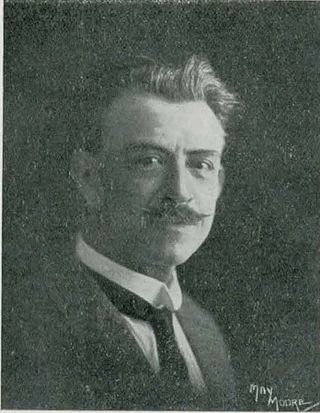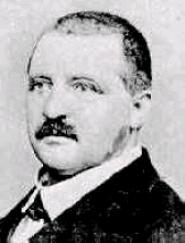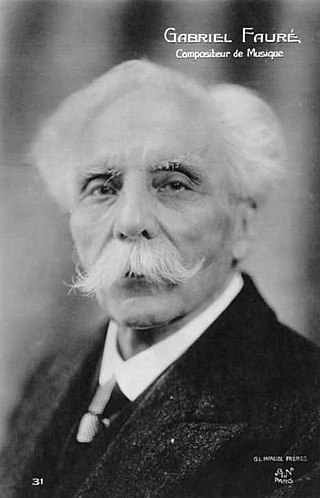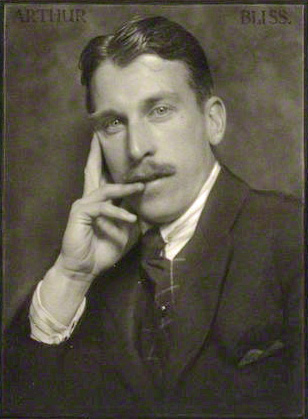Related Research Articles

Alfred Francis Hill CMG OBE was an Australian-New Zealand composer, conductor and teacher.
Pyotr Ilyich Tchaikovsky's String Quartet No. 1 in D major Op. 11 was the first of his three completed string quartets that were published during his lifetime. An earlier attempt had been abandoned after the first movement was completed.
Sergei Prokofiev's String Quartet No. 1 in B minor, Op. 50 (1931) was commissioned by the Library of Congress. The Quartet was first performed in Washington, D. C. on 25 April 1931 by the Brosa Quartet and in Moscow on 9 October 1931 by the Roth Quartet. The string quartet is in three movements, lasting around 20–25 minutes.
Antonín Dvořák wrote his String Quartet No. 10 in E♭ major, Op. 51 (B. 92), in 1879 at the request of Jean Becker, the leader of the Florentine Quartet. It is sometimes nicknamed the Slavonic Quartet. The quartet was dedicated to Jean Becker; it was first performed by the Joachim Quartet at a private chamber music evening on July 29, 1879, in Berlin. It was published by Simrock, Berlin, in 1879.
Antonín Dvořák finished the composition of his String Quartet No. 1 in A major, Op. 2, (B. 8), one of his earliest chamber works, in March 1862.

The String Quartet in C minor WAB 111, was composed by Anton Bruckner's in 1862 during his tuition by Otto Kitzler.

The String Quartet in E minor, Op. 121, is the only string quartet by Gabriel Fauré. Completed in 1924 shortly before his death at the age of 79, it is his last composition. His pupil Maurice Ravel had dedicated his String Quartet to Fauré in 1903, and he and others urged Fauré to compose one of his own; he declined, on the grounds that it was too difficult. When he finally decided to write it, he did so in trepidation.
The Quartettsatz in c-Moll, D. 103 was composed by Franz Schubert in 1814. It is believed to be the only surviving movement of a complete quartet in C minor.
The String Quartet No. 2 in B♭ major, B. 17, was probably composed by Antonín Dvořák in 1869, early in his compositional career. It was one of three which Dvořák later believed he had destroyed after he had disposed of the scores.
String Quartet No. 1 in B-flat major "Maori Quartet", Stiles 1.2.3.3 SQ1 is the first of Alfred Hill's seventeen string quartets. Its composition began before 1892, it was completed after 1896 and premiered only on 18 May 1911 in Sydney.
Alfred Hill composed his String Quartet No. 3 in A minor "The Carnival", Stiles 1.2.3.3 SQ3, in 1912, while he was a member of the Austral String Quartet. The manuscript score is preserved in the National Library of Australia. In 1955, Hill transformed the quartet into his Symphony No. 5. The quartet is composed in four movements with an average duration of 20 minutes.
String Quartet No. 2 in G minor "A Maori Legend in Four Scenes", Stiles 1.2.3.3 SQ2, often called "Maori Quartet", was composed by Alfred Hill in 1907–1911 and premiered immediately in 1911. It is dedicated to Earnest [sic] Wunderlich — "in slight appreciation". The first two quartets were published together by Breitkopf & Härtel in 1913. Each of them used to be referred as Maori, a feature that can lead to confusion. Today the first one is called Maori, while for the second the longer subtitle is retained.
Symphony No. 1 in B-flat major, Stiles 1.3.4.1 Sy1, the so-called Maori Symphony, is the first symphony by Alfred Hill. Its first three movements were completed by 1898, but the last movement remained unfinished. This may have been the second symphony composed in the Antipodes. The first two movements of this symphony are the only symphonic movements by Hill not to be arranged from his earlier chamber music. The Finale was reconstructed by Allan Stiles, and the whole symphony got its first performance in 2007. The approximate duration is 40 minutes.
String Quartet No. 4 in C minor, Stiles 1.2.3.3 SQ4, was completed by Alfred Hill on 25 July 1916 in Neutral Bay, Sydney. It is dedicated to Henri Verbrugghen and his Verbrugghen String Quartet. It is Hill's first non-program string quartet. The first two movements were transcribed for orchestra in 1955 forming the basis of the Symphony No. 4 "The Pursuit of Happiness" in which this music turns to have a program.
Symphony No. 4 in C minor "The Pursuit of Happiness", Stiles 1.3.4.1 SyP, was finished by Alfred Hill in 1954 or 1955. Its first two movements were arranged from Hill's String Quartet No. 4 (1916), while the last one derives from the finale of his String Quartet No. 17. The symphony is dedicated "to my esteemed friend Henry Kripps", a prominent Australian conductor. Its approximate duration is 20 minutes.

Arthur Bliss's String Quartet in A major, Op. 4 is the first of four string quartets the composer wrote. Composed in 1913 while Bliss was still a student at Cambridge, the work was withdrawn from performance by the composer in 1919, along with most of his pre-war chamber music, and not revived until the 1990s.
String Quartet No. 5 in E-flat major "The Allies", Stiles 1.2.3.3 SQ5, was completed by Alfred Hill on 24 June 1920 in Sydney. It is dedicated to Henri Verbrugghen, whose quartet gave the first public performance of the composition on 2 March 1921. The music of the quartet presents four nations who were allies during World War I. It was subsequently arranged by Hill for string orchestra as his Symphony No. 11 "The Four Nations". The approximate duration of the quartet is 29–33 minutes, which makes it one of the most substantial quartets composed by Hill.
Symphony No. 11 in E-flat major "The Four Nations" for string orchestra, Stiles 1.3.3.1 SyFN, was arranged by Australian composer Alfred Hill from his String Quartet No. 5 "The Allies" at some point in 1950s, but the precise date remains unknown, and there is no information about the first performance. The music of the symphony follows that of the original String Quartet, except for the Finale being 4 bars shorter than in the quartet, due to a minor truncation of the melody of the main subject at each repeat of it. The most obvious difference is the addition of the double bass part. Hill also altered the title of the composition.
String Quartet No. 6 in G major "The Kids", Stiles 1.2.3.3 SQ6, by Alfred Hill bears dedication: "for the young fry at the New South Wales State Conservatorium of Music". It was most likely written for the student string quartet groups at the Conservatorium mentored by the composer. The manuscript is dated 3 September 1927. Its technical demands being limited, it is an accessible for amateurs composition. The quartet is set in earlier style, reminiscent of Haydn, Schubert, and other classical composers. With approximate duration of only 15–16 minutes, this is the shortest of all Hill's quartets.
String Quartet No. 8 in A major, Stiles 1.2.3.3 SQ8, by Australian composer Alfred Hill was finished half month after his Seventh: the manuscript score and parts, which are preserved in the National Library of Australia, are dated 6 December 1934. While the previous quartet was a somewhat transitive composition from his middle period, with the Eighths one starts counting Hill's late quartets. It is thematically unified and has many impressionistic features. In 1950s Hill arranged it into a string symphony, the first known performance of which was on 27 March 1957. The approximate duration of the quartet is 25–28 minutes.
References
- ↑ Allan Stiles. A Catalogue of the Music of Alfred Hill
- ↑ Library catalogue entry for the manuscript score
- 1 2 Donald Maurice. Booklet notes to Naxos 8.572446
- ↑ Melissa Rogers. Revisiting Alfred Hill (1869–1960): Examining issues of reception and compositional approach , PhD thesis. Sydney: UNSW, 2018. P. 19–20.
- ↑ Melissa Rogers. Revisiting Alfred Hill (1869–1960): Examining issues of reception and compositional approach , PhD thesis. Sydney: UNSW, 2018. P. 164.
- ↑ Melissa Rogers. Revisiting Alfred Hill (1869–1960): Examining issues of reception and compositional approach , PhD thesis. Sydney: UNSW, 2018. Appendices, p. 153.
- ↑ Stiles Music Publications
- ↑ Melissa Rogers. Revisiting Alfred Hill (1869–1960): Examining issues of reception and compositional approach , PhD thesis. Sydney: UNSW, 2018. P. 115; Appendices, p. 99.